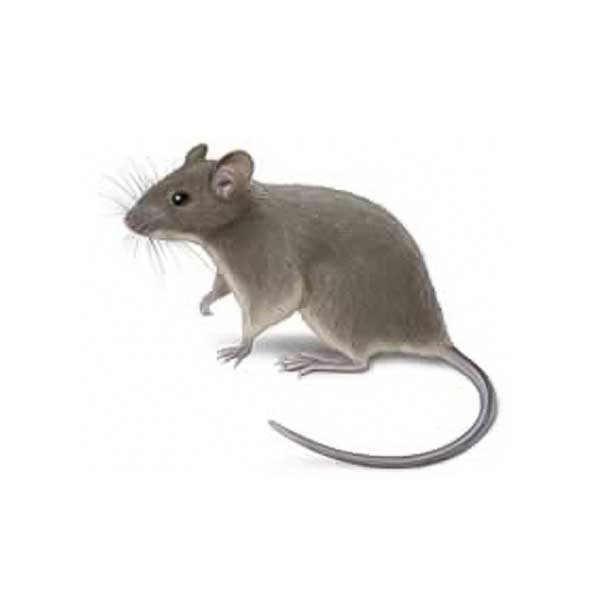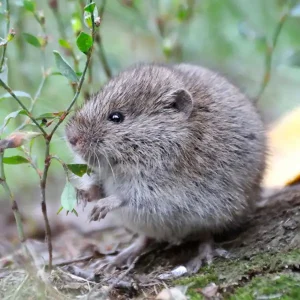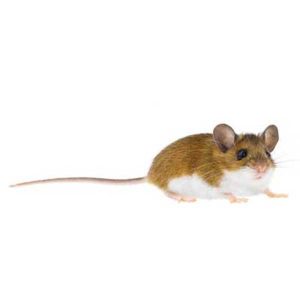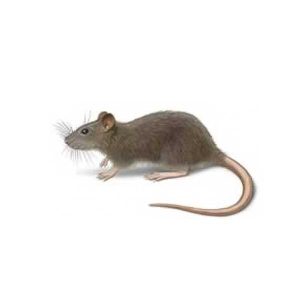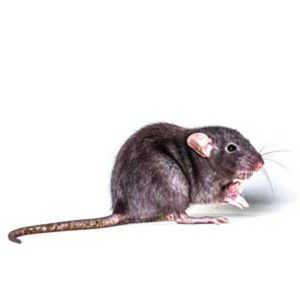House Mice in Georgia
Wild mice are carriers of disease and do not belong in your home. Mice are nocturnal, preferring to do their damage at night. Also, they are omnivorous, meaning they’ll eat almost anything they can handle, including their droppings. House mice prefer to move along baseboards and countertops, marking their territory with urine and feces, and typically build their nests close to a food source, which could be in your home. Their droppings are small and brown, the size of a sesame seed. Because they breed quickly, your home can be completely infested before you notice their presence.
What Do House Mice Look Like?
House mice are small, typically measuring 2.5 to 3.75 inches in body length, with a scaly, hairless tail roughly the same length as their body. They have pointed noses, large ears, and small black eyes. Their fur is usually light brown to gray, and they have a lighter-colored underbelly. Unlike their relatives, deer mice and wood mice, house mice lack a distinct bicolored fur pattern.
Signs of House Mouse Infestation
Detecting a house mice infestation early can help prevent more significant problems. Here are the common signs of a mouse problem in your home:
Droppings: Small, dark mouse droppings, shaped like rice grains, are often found near food sources, in cabinets, and along baseboards.
Gnaw marks: Mice are notorious for gnawing on wood, electrical wires, and other materials, leaving behind chew marks.
Nests: House mice build nests from nesting materials such as shredded paper, insulation, or fabric. These nests are usually hidden in attics, basements, wall voids, or crawl spaces.
Rub marks: Oily smudges or rub marks along walls or baseboards can indicate where mice travel.
Noises: Scratching, scurrying, or squeaking sounds, especially at night, are often heard in walls or ceilings.
Habitat, Diet, Life Cycle & Behaviors
Where Do House Mice Live?
House mice construct nests outdoors in fields and beneath trees and shrubs. Mice will build nests indoors in quiet, undisturbed places like wall voids, kitchen cabinets, attics, and garages. Droppings, fresh gnaw marks, and tracks or rub marks indicate areas where mice are active. Nests are made from finely shredded paper or other fibrous material, usually in sheltered locations. House mice have a characteristic musky odor that reveals their presence. Mice are active mostly at night but can be seen occasionally during daylight hours.
Diet
House mice have big appetites for such small animals. They are omnivorous and will eat various foods, including grains, seeds, fruits, and insects. Indoors, they are known to feed on pantry items and contaminate stored food with their droppings and urine. Their constant need to gnaw is a significant problem as it can damage food packaging, furniture, and even electrical wires, leading to fire hazards.
Life Cycle
A female house mouse can give birth to as many as 10 litters per year, each containing 5 to 12 pups. The young are born blind and hairless, but they grow quickly and reach maturity within 6 to 8 weeks. Mice have a relatively short lifespan, living up to 1 year in the wild, but they may live longer indoors where there are fewer predators and more consistent access to food and shelter.
Behaviors
House mice are nocturnal and very active during the night. They are excellent climbers, jumpers, and swimmers, which allows them to access food sources and create nests in hard-to-reach areas. House mice are constantly moving, often traveling along well-defined paths, and communicate using high-pitched squeaks. Their natural instinct to gnaw helps keep their teeth sharp but also causes significant damage to homes.
Are House Mice Dangerous?
House mice contaminate food and are implicated in transmitting diseases like salmonella and bubonic plague. They can also cause significant damage to structures by gnawing and tunneling through walls. Mice have also been implicated in generating fires and explosions in homes and buildings. Chewed, exposed wires inside walls can spark, causing interior walls to catch fire. Contact our rodent pest control if you have a house mouse infestation.
How to Get Rid of House Mice?
To effectively eliminate a house mouse infestation, combining prevention, treatment, and ongoing monitoring is vital. Utilizing traps, such as snap, live, and glue traps, can help catch mice, and they should be strategically positioned in areas where mouse activity is high, such as along walls or near nests. Although poison baits can be effective, they should be handled carefully to protect pets and children.
Moreover, sealing entry points is essential since mice can fit through surprisingly small gaps. Using caulk or steel wool to close cracks and holes will help block their access. Lastly, diligently cleaning and sanitizing spaces where mice have been active will not only remove droppings and urine but also discourage future infestations.
Enlisting our professional rodent pest control services for their application can be particularly beneficial to ensure safety. Dealing with a mouse infestation can be challenging, but our experienced team is here to help you every step of the way. We have the expertise and tools to safely and effectively manage the situation, allowing you to regain peace of mind in your home.
House Mice Prevention Tips
Preventing house mice from entering your home is crucial to avoiding an infestation. Start by inspecting your home for small gaps, cracks, or openings, and seal them with steel wool, caulk, or other rodent-proof materials. Keeping food sources sealed is also essential—store food in airtight containers, maintain a clean kitchen and avoid leaving pet food or bird seed out overnight. Reducing clutter, especially in storage areas like attics and basements, will help eliminate potential hiding and nesting spots for mice. Additionally, store firewood and other materials away from the house, as they can become nesting sites. Lastly, maintain your yard by trimming trees and shrubs away from the house and removing any debris that could offer shelter to mice. Following these steps can significantly lower the chances of a house mouse infestation.
Need Help with House Mice Control in Your Georgia Home?
If you’re dealing with a house mice infestation or suspect you have a mouse problem, it’s essential to act quickly. Our team offers professional rodent pest control services tailored to the specific needs of your home. Our experts can help you at every step, from identifying the source of the infestation to implementing effective treatment plans.
In addition to our pest control services, we provide helpful resources such as rodent identification guides to accurately pinpoint the type of rodent you’re dealing with, rodent prevention guides to safeguard your home from future infestations, and rodent treatment guides to address active infestations effectively. These guides offer valuable information to help you handle infestation challenges.
Contact us today to schedule an inspection and take the first step in protecting your home from these destructive pests.
Need help with pest control?
Ready for your FREE quote?
Fill out the form below and we’ll be in touch!
*During normal business hours. After hours inquiries will be returned the next business day.
FAQS
How High Can A House Mouse Jump?
House mice are surprisingly agile for their size and can jump up to 12 inches high. This ability helps them easily reach countertops, shelves, and other elevated areas for food or shelter.
Do House Mice Carry Hantavirus?
House mice are not typically known carriers of hantavirus in the U.S. However, deer mice, a close relative, are more commonly associated with Hantavirus Pulmonary Syndrome (HPS). House mice can still pose serious health risks as they transmit other diseases like salmonellosis and Lymphocytic choriomeningitis virus (LCMV) through their droppings, urine, and nesting materials.

